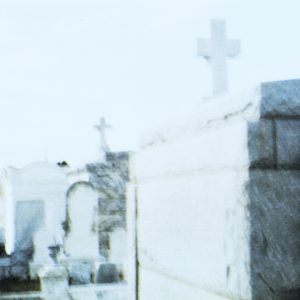Die Rezension eines CELER-Tonträgers mit den Worten “Wow, es gibt was Neues von CELER!” einzuleiten, scheint angesichts des Umstandes, dass das Soloprojekt des Wahl-Japaners WILL LONG pro Jahr im Schnitt zwischen fünf und fünfzehn Alben veröffentlicht, wenig vielversprechend – deutlich spektakulärer wäre es, gäbe es ausnahmsweise mal nichts Neues von CELER. Immerhin: Für das Jahr 2015 verzeichnet man bei discogs lediglich sechs Alben und ein paar File-Releases – stellt man in Rechnung, dass Mr. LONG im Jahr 2012 auf sechzehn (sic!) Alben zurückblicken konnte, so scheint er es mittlerweile also ein kleines bisschen ruhiger angehen zu lassen. Womit wir beim Thema wären: Ruhig angehen lassen. Ruhe. Ruuuhe. Entspannung. Tiefenentspannung. Und wer im Zusammenhang mit CELER von “Tiefenentspannung” spricht, der meint nicht nur einfach Tiefenentspannung, nein: der meint die ultimative, abgrundtiefe Totaltiefenentspannung. Das ist im Falle des vorliegenden Tonträgers nicht anders.
“Akagi” heißt das neue Opus und mit Hilfe von Tante Google erfährt man, dass es sich bei diesem Titel um den Namen eines japanischen Vulkans handelt, der so viel wie “Rotes Schloss” bedeutet und in den 20er-Jahren des vergangenen Jahrhunderts auch einem Flugzeugträger der Kaiserlich Japanischen Marine verliehen wurde, welcher im Verlauf der Schlacht um Midway während des Zweiten Weltkrieges eine zentrale Rolle spielte, die uns an dieser Stelle jedoch nicht weiter beschäftigen soll, schließlich wollen wir es tunlichst vermeiden, vom Höckchen zum Stöckchen undsoweiter zu kommen. Am wahrscheinlichsten ist’s eh, dass es der Vulkan war, der als Namenspatron diente, insofern belassen wir’s der Einfachheit halber dabei. Im Rahmen des, von WILL LONG höchstselbst verfassten Promotextes erfahren wir überdies zweierlei: Zum einen, dass er die Musik auf dem Album – ein einziges Stück von knapp 80 Minuten Länge – für ein “live yoga event at Yougenji temple in Northern Tokyo” eingespielt hat, wo sie quasi als Soundtrack fungierte und auf das anwesende Publikum eine extrem beruhigende bis einschläfernde Wirkung ausübte. Zum anderen, dass ihn selbst diese Musik an seine selige Großmutter sowie die Wärme und Ruhe erinnert, die sie ungeachtet der Bettlägerigkeit ausstrahlte, welche sie in den letzten Jahren ihres Lebens erdulden musste. In diesem Zusammenhang scheint es denn recht naheliegend, es könnte sich bei jener älteren Dame, die auf dem Frontcover zu sehen ist, wie sie, angetan mit einem blauen Kleid, mitten auf einer Schotterpiste im Wald an einem blauen Auto lehnt und freundlich in die Kamera winkt, um ebendiese LONG’sche Oma handeln.
So viel zum thematischen Hintergrund, der zugegebenermaßen irgendwie diffus und ein bisschen beliebig bleibt. Doch das ist halb so wild, denn kommen wir zur Musik, so kann die deutlich kürzer abgehandelt werden. Wenn man nämlich eines mit Fug & Recht sagen kann, dann dieses: “Akagi” ist ein absolut typisches CELER-Album, wie der Mann schon Dutzende und Aberdutzende unter die Leute gebracht hat. Und auch, wenn der Rezensent grundsätzlich durchaus mit musikalischer Monotonie nebst endlos kreiselnden, an- & abschwellenden Drones und Soundflächen im allgemeinen sowie CELER im besonderen sympathisiert, so muss an dieser Stelle rigoros Klartext gesprochen werden: Angesichts des, von dergleichen meditativem Gesumsel aus sämtlichen Nähten platzenden CELER-Backkatalogs ist “Akagi” – man entschuldige die deutlichen Worte, doch hier sind sie unumgänglich – überflüssig wie ein Kropf. Es mag ja sein, dass WILL LONG hier, wie er im Promotext ausführt, allerlei technische Innovationen aufgefahren hat – am Ergebnis ändert das wenig bis gar nichts, denn der Sound ist exakt derselbe, wie man ihn von -zig anderen seiner zahlreichen Veröffentlichungen kennt. “For this I created a new piece of music using two reel-to-reel tape machines, and two tape loops of keyboards with similar time structures, but each with different, overlapping chords”, so LONG. Und weiter: “They played simultaneously, crossing in different combinations, and with manual alterations of the volume and high/low settings on the machines.” Man möchte entgegnen: Das ist ja alles gut und schön, Herr Musikant, am Ende steht dann aber doch einer jener endlos langen Einschlafdrones, wie CELER sie seit Jahren produziert. Und irgendwann wird das selbst dem erklärtesten und wohlwollendsten Freund der Wohnzimmertapetenmusik ein wenig zu fad, zumal, wenn die Soundemissionen derart inflationär den Markt fluten.
Fazit: Nett gemeinte Veröffentlichung von einem zweifellos sympathischen Zeitgenossen, der zweifellos nur die allerbesten Absichten hat. Das ändert leider nichts an der grundstürzenden Redundanz, die diesem Tonträger eignet. Bei aller tiefen Liebe zum Drone, bei aller Freude am Ambient und bei aller erklärtermaßen vorhandenen Liebe zu CELER: Diese CD braucht echt kein Mensch. Sorry, Mr. LONG!
